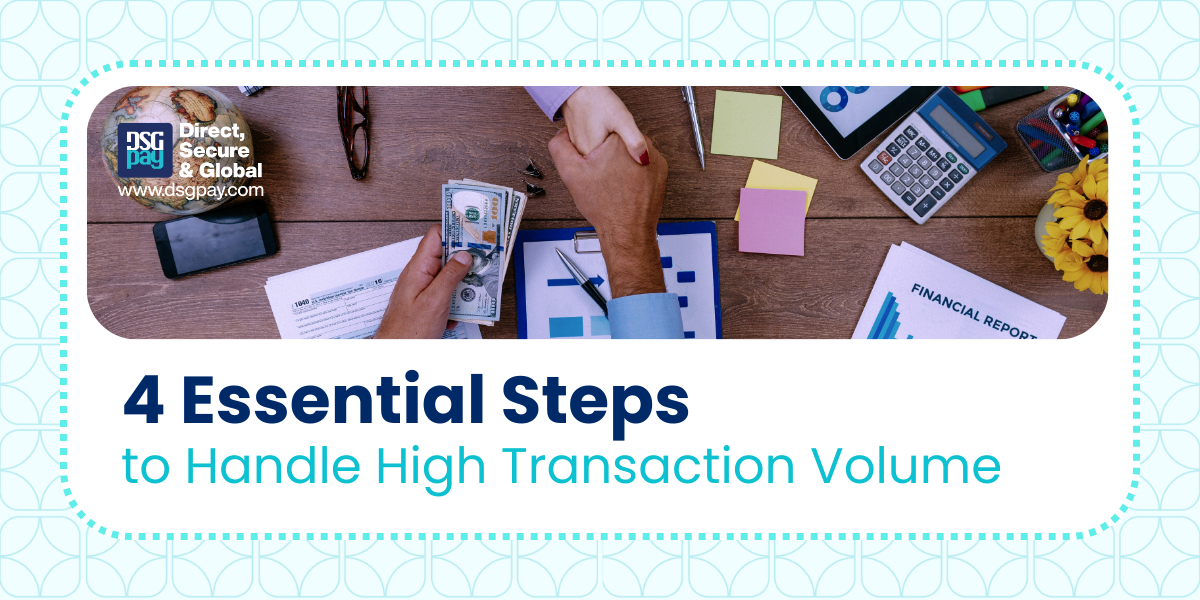Handling high transaction volume doesn’t have to be complex or overwhelming. Whether you’re managing global payroll, paying international suppliers, or distributing funds across multiple locations, having the right process in place is crucial. By leveraging the right tools and strategies, you can streamline operations, reduce errors, and minimize costs.
In this guide, we’ll walk you through four essential steps to simplify high transaction volume management, helping you ensure your payments are accurate, efficient, and secure. From assessing your needs to automating processes, these steps will equip your business to handle high transaction volume confidently and easily, allowing you to focus on growth and success.
What is High Transaction Volume?
High Transaction Volume refers to the process of making large-scale payments to multiple recipients across the world. These payments are usually made using digital payment systems, such as wire transfers, digital wallets, or even cryptocurrency exchanges, to transfer money from one bank account to another. High transaction volume solutions aim to simplify payment processing, making it more efficient, reliable, and cost-effective for businesses managing significant financial operations.
Streamline Operations with High-Volume Transaction Solutions
Handling high transaction volume can be a powerful tool for businesses and organizations looking to streamline their financial operations and expand their reach. Whether you’re paying employees across multiple locations, settling invoices with international suppliers, or distributing funds to a network of partners, high transaction volume solutions can help you reduce time, errors and costs.
These tools minimize the risk of fraud and ensure that payments are processed accurately and securely. If you’re new to managing high transaction volume and looking to get started,
Step 1: Payment Management: Assess Your Needs

Before you start making high transaction volume, it’s important to assess your needs and determine what types of payments you’ll be making, how often you’ll be making them, and who your recipients will be. This will help you choose the right payment solution and payment method for your business. You must consider the volume of payments you need to process.
Some payment providers offer payment solutions for businesses that need to process a large number of payments or transactions at once, while others may only offer services for smaller businesses. Knowing the scale and complexity of your payments will guide you in selecting the best system to manage them efficiently.
Step 2: Choose a Mass Payment Solution Service
There are many services available to manage high transaction volumes, including digital payment platforms, wire transfer services, and more. Popular digital payment platforms such as PayPal, Venmo, and Google Wallet are reliable for handling frequent global payments. Wire transfer services like Western Union and MoneyGram are also popular for global payments. Researching the features of various providers, considering fees, speed, security, and global accessibility, will help ensure that you choose the right payment service tailored to your business.
Step 3: Understand the Legal and Regulatory Environment

High transaction volume can be subject to a variety of laws and regulations, depending on the countries involved and the nature of the payments. It’s important to stay informed about currency controls, taxes, and other regulations that could impact your transactions.
Consulting with a legal professional who specializes in global financial transactions can help you navigate these complexities. They can help explain the laws and regulations that apply to your specific situation and provide guidance on how to comply with them.
Additionally, it is advisable to research relevant government websites and organizations to stay up-to-date on any changes in the laws and regulations related to mass payments.
Step 4: Test and Monitor Your Payment Solution and Set Up Payment Automation
After setting up your high transaction volume service, it is important to test it and monitor your payments to ensure they are being processed correctly. Errors in large payments can be costly, so having a monitoring process in place, such as setting up alerts, reviewing reports, and regularly reconciling accounts, helps identify and address any issues promptly.
By following these steps, you can confidently make high transaction volume, knowing that you’ve chosen the right service, understood the legal requirements, and established a robust system for monitoring and automation. This approach enables businesses to focus on growth and expansion without worrying about the complexities of international payments.
Final Thoughts
Handling high transaction volume efficiently is key to optimizing business operations in a global economy. By assessing your needs, choosing the right solution, complying with regulations, and setting up proper monitoring and automation processes, your business can simplify its payment operations and scale effectively across international markets.



